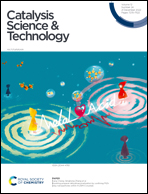Advances and future trends in selective oxidation catalysis: a critical review
Abstract
Selective or partial oxidation of organic compounds is one of the most important chemical processes due to its industrial significance and the intermediates formed in oxidation reactions are used to synthesize pharmaceuticals, perfumes, plastics, pesticides, petrochemicals, dyes, and agrochemicals. Since oxidation reactions are complex (consecutive and parallel) in nature, to control the reaction without leading to complete oxidation requires highly selective catalysts with tailor made properties. From ecological and environmental points of view also, direct selective oxidation reactions can provide many new synthetic routes for the commercially attractive processes including the valorization of biomass in the net zero economy. In this review, we have covered the subject by including the basic phenomenon of the oxidation processes, a few commercially important applications and the current state of research. Finally the review mainly focuses on catalyst design. Effect of mixed oxides, catalyst mole ratio, metal loading, supported and unsupported metal oxides, and synthetic routes of preparation on catalytic activity are summarized. Also emphasized is the relationship between structure and activity of different metal based catalyst. It covers most of the important substrates and their selective oxidations in gas and liquid phases. Future trends in oxidation catalyst design and syntheses are provided.



 Please wait while we load your content...
Please wait while we load your content...